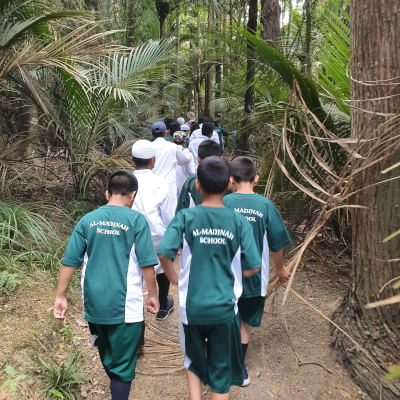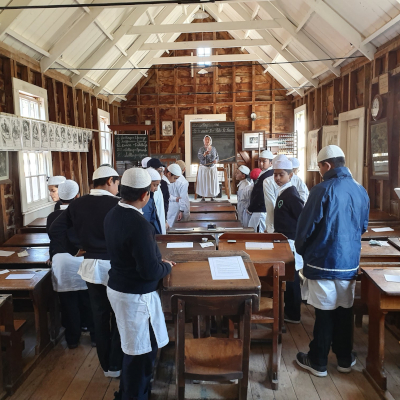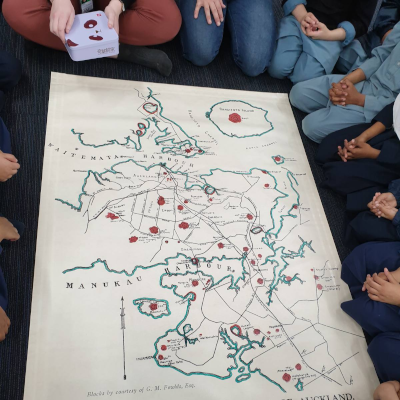Social Studies

The Social Sciences learning area is about how societies work and how people can participate as critical, active, informed, and responsible citizens. Contexts are drawn from the past, present, and future and from places within and beyond New Zealand
Through the social sciences, students develop the knowledge and skills to enable them to: better understand, participate in, and contribute to the local, national, and global communities in which they live and work; engage critically with societal issues; and evaluate the sustainability of alternative social, economic, political, and environmental practices.
Students explore the unique bicultural nature of New Zealand society that derives from the Treaty of Waitangi. They learn about people, places, cultures, histories, and the economic world, within and beyond New Zealand. They develop understandings about how societies are organised and function and how the ways in which people and communities respond are shaped by different perspectives, values, and viewpoints. As they explore how others see themselves, students clarify their own identities in relation to their particular heritages and contexts.
The Learning areas include: Social Studies, History and Geography.
https://nzcurriculum.tki.org.nz/The-New-Zealand-Curriculum/Social-Sciences
History
History presents students with the dilemmas, choices, and beliefs of people in the past. It connects students with the wider world as they develop their own identities and sense of place. Students engage with history at personal, local, and international levels. They investigate the histories of their communities, New Zealand, and the wider world.
https://seniorsecondary.tki.org.nz/Social-sciences/History.
Geography
Geography seeks to interpret the world and how it changes over time – past, present, and future. It explores the relationships and connections between people and both natural and cultural environments. Geography investigates the ways in which features are arranged on the earth’s surface. It describes and explains the patterns and processes that create them. Students learn to think spatially and use maps, visual images and new technologies, including geographical information systems (GIS), to obtain, present and analyse information.
https://seniorsecondary.tki.org.nz/Social-sciences/Geography.
Social Studies student’s Activities
Primary
The social sciences learning area is about how societies work and how people can participate as critical, active, informed, and responsible citizens. Contexts are drawn from the past, present, and future and from places within and beyond New Zealand.
Through the social sciences, students develop the knowledge and skills to enable them to: better understand, participate in, and contribute to the local, national, and global communities in which they live and work; engage critically with societal issues; and evaluate the sustainability of alternative social, economic, political, and environmental practices.
Students explore the unique bicultural nature of New Zealand society that derives from the Treaty of Waitangi. They learn about people, places, cultures, histories, and the economic world, within and beyond New Zealand. They develop understandings about how societies are organised and function and how the ways in which people and communities respond are shaped by different perspectives, values, and viewpoints. As they explore how others see themselves, students clarify their own identities in relation to their particular heritages and contexts.
Achievement objectives for social studies at levels 1–5 integrate concepts from one or more of four conceptual strands:
Identity, Culture, and Organisation – Students learn about society and communities and how they function. They also learn about the diverse cultures and identities of people within those communities and about the effects of these on the participation of groups and individuals.
Place and Environment – Students learn about how people perceive, represent, interpret, and interact with places and environments. They come to understand the relationships that exist between people and the environment.
Continuity and Change – Students learn about past events, experiences, and actions and the changing ways in which these have been interpreted over time. This helps them to understand the past and the present and to imagine possible futures.
The Economic World – Students learn about the ways in which people participate in economic activities and about the consumption, production, and distribution of goods and services. They develop an understanding of their role in the economy and of how economic decisions affect individuals and communities.
Intermediate
Years 7 and 8
Social Studies
The four conceptual strands are: Identity, Culture, and Organisation, Place and Environment, Continuity and Change and The Economic World.
The topics studied are: Treaty of Waitangi, The Environment and Us, Land of Plenty, War and Refugees, Rainforests, Consumer Rights, Building Pyramids and Right to Water
Years 9 and 10
Social Studies
The four conceptual strands are: Identity, Culture, and Organisation, Place and Environment, Continuity and Change and The Economic World.
The topics studied are: Treaty of Waitangi, Human Rights, Natural Disasters, Refugees, Cultural Diversity in Aotearoa, Systems of Government, Cultural Interaction, Changing Nature of Work, Asia Celebrations and Resources and Sustainability.
Senior
NCEA level 1
History
Pre-requisite: Year 10 Social Studies
Course Outline: At Level 1 students will gain knowledge, skills, and experience to understand how the causes and consequences of past events that are of significance to New Zealanders shape the lives of people and society. They will understand how people’s perspectives on past events that are of significance to New Zealanders differ. Students may choose to do standards up to 18 credits. The programme allows students to get course endorsement.
Geography
Pre-requisite: Year 10 Social Studies
Course outline: At Level 1 students will understand that natural and cultural environments have particular characteristics, how environments are shaped by processes that create spatial patterns, and how people interact with natural and cultural environments and that this interaction has consequences. Students may choose to do standards up to 18 credits. The programme allows students to get course endorsement.
NCEA level 2
History
Prerequisite: 12 credits achieved at Level 1 History
Course Outline: At level 2 students will understand how historical forces and movements have influenced the causes and consequences of events of significance to New Zealanders. They will understand how people’s interpretations of events that are of significance to New Zealanders differ. . Students may choose to do standards up to 18 credits. The programme allows students to get course endorsement.
Geography
Prerequisite: 12 credits achieved at Level 1 Geography
Course outline: At Level 2 students will understand how the processes that shape natural and cultural environments change over time, vary in scale and from place to place, and create spatial patterns. They will understand how people’s perceptions of and interactions with natural and cultural environments differ and have changed over time. Students may choose to do standards up to 18 credits. The programme allows students to get course endorsement.
NCEA level 3
History
Prerequisite: 12 credits achieved at Level 2 History
Course outline: At level 3 students will understand that the causes, consequences, and explanations of historical events that are of significance to New Zealanders are complex and how and why they are contested. They will understand how trends over time reflect social, economic, and political forces. . Students may choose to do standards up to 18 credits. The programme allows students to get course endorsement.
Geography
Prerequisite: 12 credits achieved at Level 1 Geography
Course outline: At Level 3 students will understand how interacting processes shape natural and cultural environments, occur at different rates and on different scales, and create spatial variations. They will understand how people’s diverse values and perceptions influence the environmental, social and economic decisions and responses that they make. Students may choose to do standards up to 18 credits. The programme allows students to get course endorsement.




